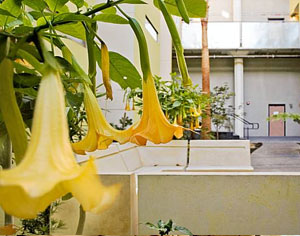West Oakland may be on the verge of positive change
The San Francisco Chronicle
by by Chip Johnson
November 3, 2009
New housing development has arrived at one of the most forgotten outposts on the Oakland landscape – a West Oakland neighborhood long known by locals as the Lower Bottom.
Central Station is a project to build 1,200 units of mixed housing at the site of the city’s old Southern Pacific train station, and it’s a long way from anywhere.
This new community sits on 26 acres on the edge of the city, behind the old factories that stand along the Grand Avenue entrance to the Bay Bridge.
The development offers a mix of apartments, loft condos and 130 single-family row houses. And although the complex will carry the design imprint of four separate developers, so far there is a seamless transition from one building to the next.
There are a few budding businesses – a community-based fresh foods store, a curio shop and two cafes – at the end of Cannery Row, the main pathway through the center of a loft housing complex at the old Pacific Coast Cannery warehouse, built in 1911.
The Cannery’s developer, Rick Holliday, built loft housing in San Francisco’s SoMa district in the 1980s and new housing in Emeryville in the 1990s. He believes there is still life in the old West Oakland neighborhood on the city’s industrial waterfront.
“Most stories about West Oakland are so negative that people don’t realize there are enormous opportunities as well,” said Holliday, who gave me a tour of the grounds at a community party last week.
Even with a yearlong economic downturn that froze credit lines and squeezed new construction financing, Holliday said the 10-year project is on track.
In the last five months, home sales at Central Station have jumped to about 10 a month, he said.
Another developer, Pulte Homes, has completed about 90 of its 130 planned new houses, Holliday said. Those homes are being built in lots of 10, as they are sold.
Construction of an additional 300 units of rental housing and a low-income apartment complex with rents between $500 and $1,000 for qualified families has not begun.
Finally, the old depot building will be redeveloped and used to provide retail and office space for the neighborhood.
Joanna Theil, a lifelong Oakland resident, purchased one of Holliday’s new loft units in May. “I like being part of a neighborhood that’s already there, and as you walk around, you can see there are efforts being put into bringing in amenities,” said Theil, 32, who works as a paralegal secretary in San Francisco. “I’ve lived in Oakland all my life. I knew what I was getting into.” And even though she is among the first 200 residents to live at Central Station, mere rumors about A’s owner Lew Wolff sniffing around Middle Harbor for a new ballpark site have her already concerned about growth.
I don’t think there’s any immediate change until city officials approve a plan for retail growth on Mandela Parkway. Since the collapse of the Nimitz Freeway in the Loma Prieta earthquake 20 years ago, the parkway has been rebuilt, fitted with Victorian-era lampposts and prepped for redevelopment.
All that’s been missing are the businesses, the people and the political will to see it through. When that happens, Central Station and the area around Mandela Parkway will light up – and West Oakland will change to the benefit of all residents.
Read more: http://www.sfgate.com/cgi-bin/article.cgi?f=/c/a/2009/11/03/BAL81AE2TH.DTL#ixzz0VptYTSUi



